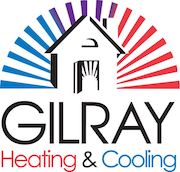
A furnace is often a background player for your home, helping keep you warm in the cold winter months. It often won't be noticed until something breaks down.
One root cause could be that your furnace has a cracked heat exchanger. It’s a potentially dangerous issue, so it’s important to familiarize yourself with the symptoms of a cracked heat exchanger and what you should do if you are worried that might be the problem.
What Is a Heat Exchanger in a Furnace?
A heat exchanger helps transition heat from the combustion chamber in your furnace to the air that circulates throughout the air ducts. It generally handles this through coils or tubes that heat the air while acting as a barrier to keep byproducts created in the combustion chamber, called flue gasses, from escaping out into your home.
Is a Cracked Heat Exchanger Dangerous?
Given its important role, it’s no surprise that a broken heat exchanger can be hazardous. A crack in the heat exchanger can enable dangerous gasses – such as carbon monoxide, which can be lethal – to be distributed through your home.
For obvious reasons, don't ever turn on your furnace if you suspect there's a crack in the heat exchanger, as doing so could make the whole household sick. Call an HVAC professional right away if you think your heating has a cracked heat exchanger that needs repair.
Four Symptoms of a Cracked Heat Exchanger:
- Furnace turns off: A crack in your heat exchanger could cause your furnace to switch off.
- Strange Smells: If the air coming out of your furnace has a strong chemical smell, it might be a sign gasses are slipping through cracks in your heat exchanger. These gasses, which can smell like formaldehyde, are a major warning sign.
- Carbon monoxide alarm goes off or you recognize health problems: If a cracked heat exchanger is relieving carbon monoxide in your home, your carbon monoxide alarm could go off or household members might experience signs of carbon monoxide poisoning. Complications include headaches, dizziness, weakness, nausea, vomiting or feeling tired. If your alarm goes off or you feel unusually tired, exit the home immediately and then call for help.
- Soot: If you see black sooty buildup on the exterior of your furnace, it’s more evidence something might be seriously wrong.
What You Can Do if the Furnace Heat Exchanger is Cracked
If you believe your furnace has a cracked heat exchanger, call a pro with extensive experience in furnace installation Wausau as soon as possible so they can examine your system and, if required, handle a furnace heat exchanger replacement. Costs should differ depending on the situation, but estimates can roughly suggest $1,000 to $3,000.
However, the good news is that heat exchangers are regularly protected by the warranty. You should check the warranty paperwork on your furnace, as while the warranty might not cover the entire cost of repairs, it can significantly lower your bill.
How to Avoid a Cracked Heat Exchanger in Your Home
One of the easiest ways to prevent a problem in your furnace overall is with consistent furnace maintenance. Furnaces work the best when they work efficiently. Contacting a skilled professional to check your furnace for broken-down parts, clogs in the air filters and other potential problems can help you avoid getting a big bill later on.
It’s also a good idea to take a look at your furnace filters every few months – it’s ideal some filters be replaced every 90 days or sooner if they are dirty or grimy. While the filters aren't a part of the heat exchanger itself, the strain of drawing air through a clogged filter makes your entire furnace work longer to do its job. And the harder your furnace works, the more deterioration parts like the heat exchanger will sustain.
